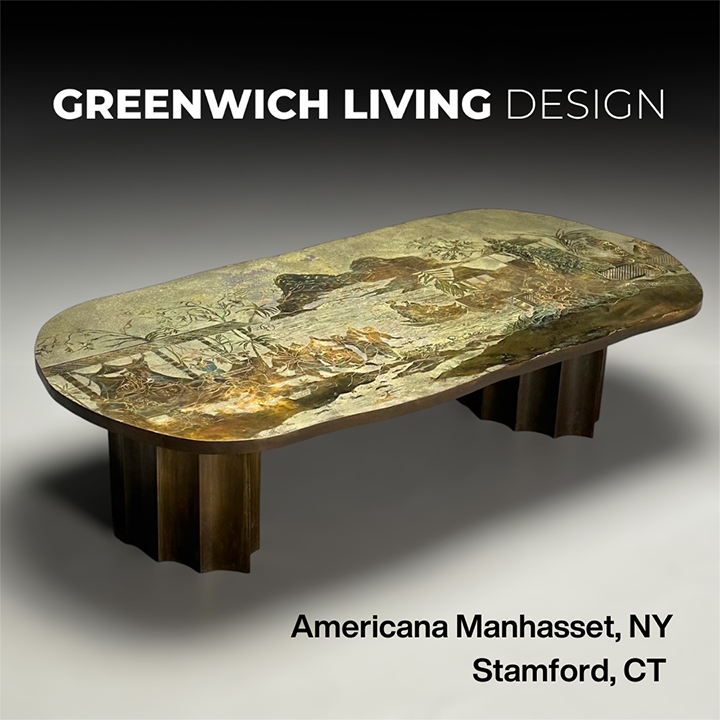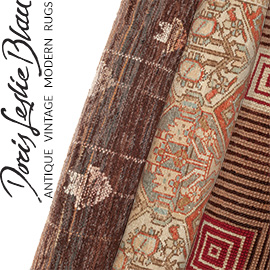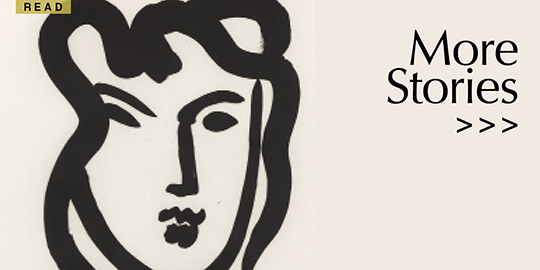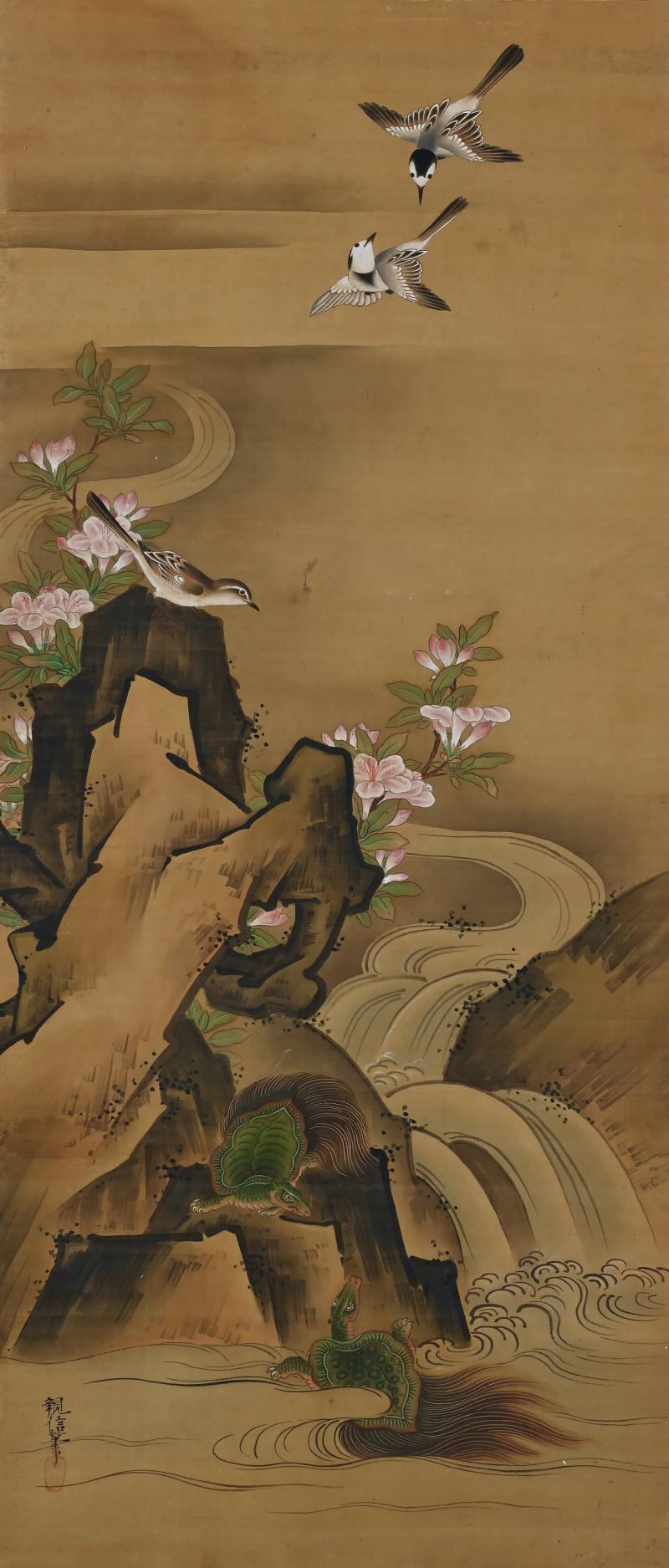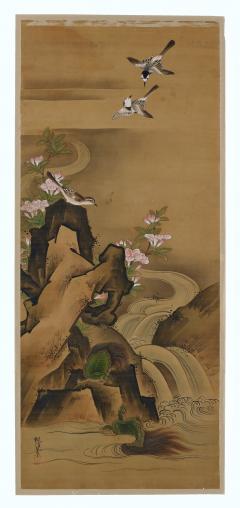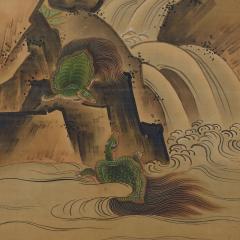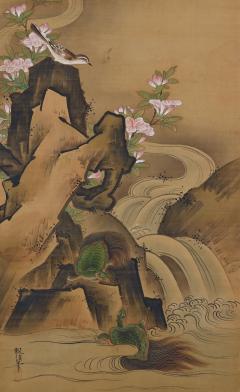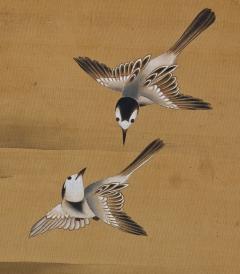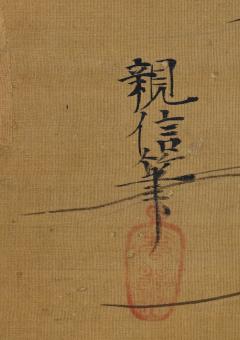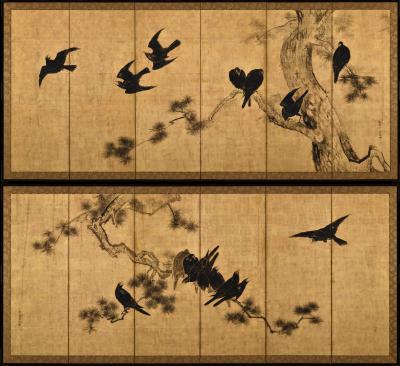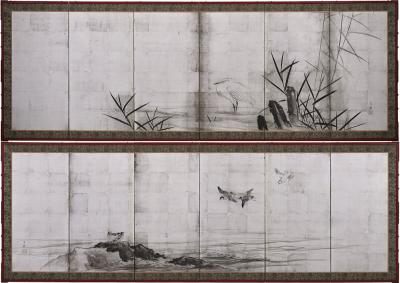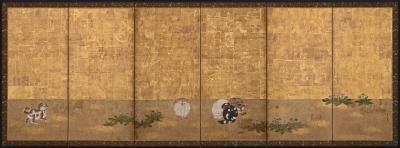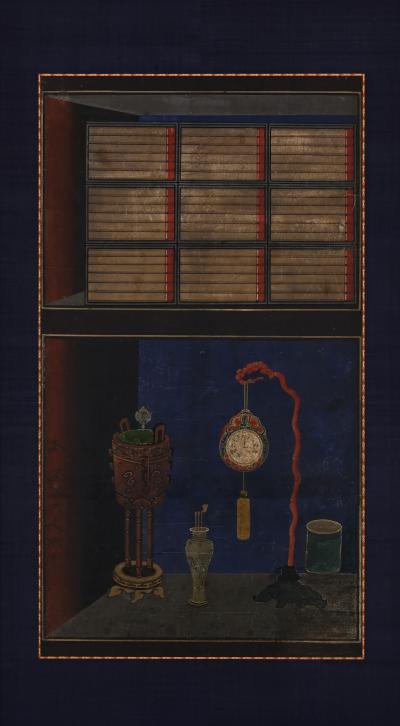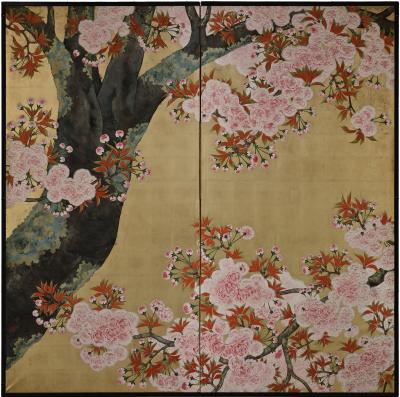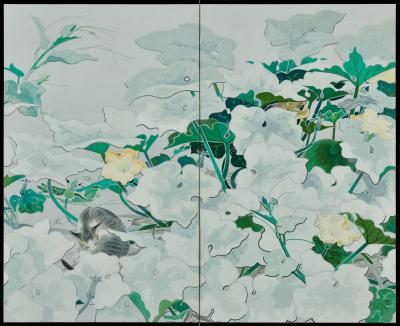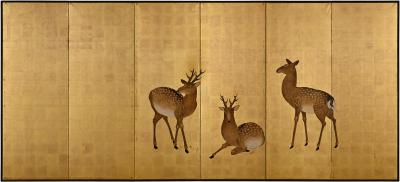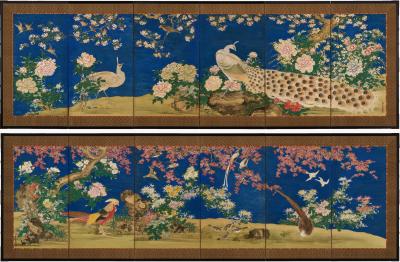Birds & Flowers of the Seasons
Turtles & Azaleas
Ink, pigment and gofun on silk
Kano Chikanobu 1819-1888
Signature: Chikanobu
Seal: Shateki
Dimensions:
H. 45.5” x W. 19.5” (115.5cm x 49.5cm)
Price: USD 4,500
Offered here is an unframed ‘kacho-e’ painting by the 19th century Japanese Takamatsu domain painter Kano Chikanobu. There are 8 individual paintings available, which originally would have been part of a set of 12. ‘Kacho-e’ literally means ‘pictures of birds and flowers’. In reality it covers a wide range of natural motifs including birds, fish, insects and small animals in combination with flowers, grasses or trees. The theme has a long history in Japanese painting. It is one of three painting genres, the other two being landscape and figure, which derive from Chinese academic painting classification. As one of the accepted types of painting to be shown in official residences, scenes of birds, flowers and animals were rife with metaphorical reference as well as physical beauty.
In these paintings Chikanobu has made conspicuous use of brilliant pigments and meticulous brushwork. The rocks, water, trees, blossoms, and birds are treated as stylized formal elements in a grand design. All of the components contribute to the patterned effect and tactile richness of the surface. Beyond their highly decorative qualities, the subject of some of the paintings are also an allusion to imperial allegiance; the pheasants are symbolic of bravery and steadfastness, peacocks represent divinity and power, and the phoenix paired with paulownia a just and benevolent ruler. Cranes and turtles symbolize longevity, and the lush, full bloom of the peony flower represents wealth and opulence. Paintings of native Japanese birds and flowers were appreciated primarily for their evocation of the seasons and the traditional poetic emotions associated with them. This is the case here with the spring scene of cherry blossoms and birds and the winter scene of narcissus, nandina and sparrows. The rich expression of flower and bird paintings opens our eyes not only to the beauty of the creations of nature, but also to the underlying feelings and emotions of people who cherished this genre of painting in the mid 19th century.
The artist, Kano Chikanobu, was the last official hereditory painter for the Takamatsu feudal domain (present day Kagawa Prefecture). It was his primary duty to supply paintings for his feudal lord. The domain was disbanded in 1871 but not before they fought against the reformist forces at the onset of the Meiji Restoration in 1868. It was a turbulent time in history and the Takamatsu strived unsuccessfully to retain their centuries old way of life.
The paintings have recently been restored in Kyoto utilizing traditional materials and techniques. Fresh backing papers have been applied to the silk in preparation for presentation in a western style frame. Amongst the work carried out during restoration was the cleaning of water damage, repair of holes with replacement silk, reinforcement of cracked silk and touch-ups of the background. There has been no re-painting of the images.




